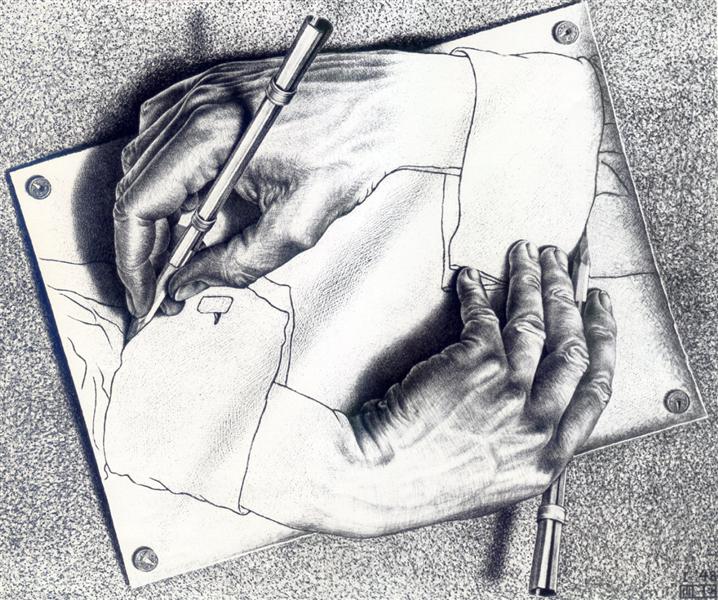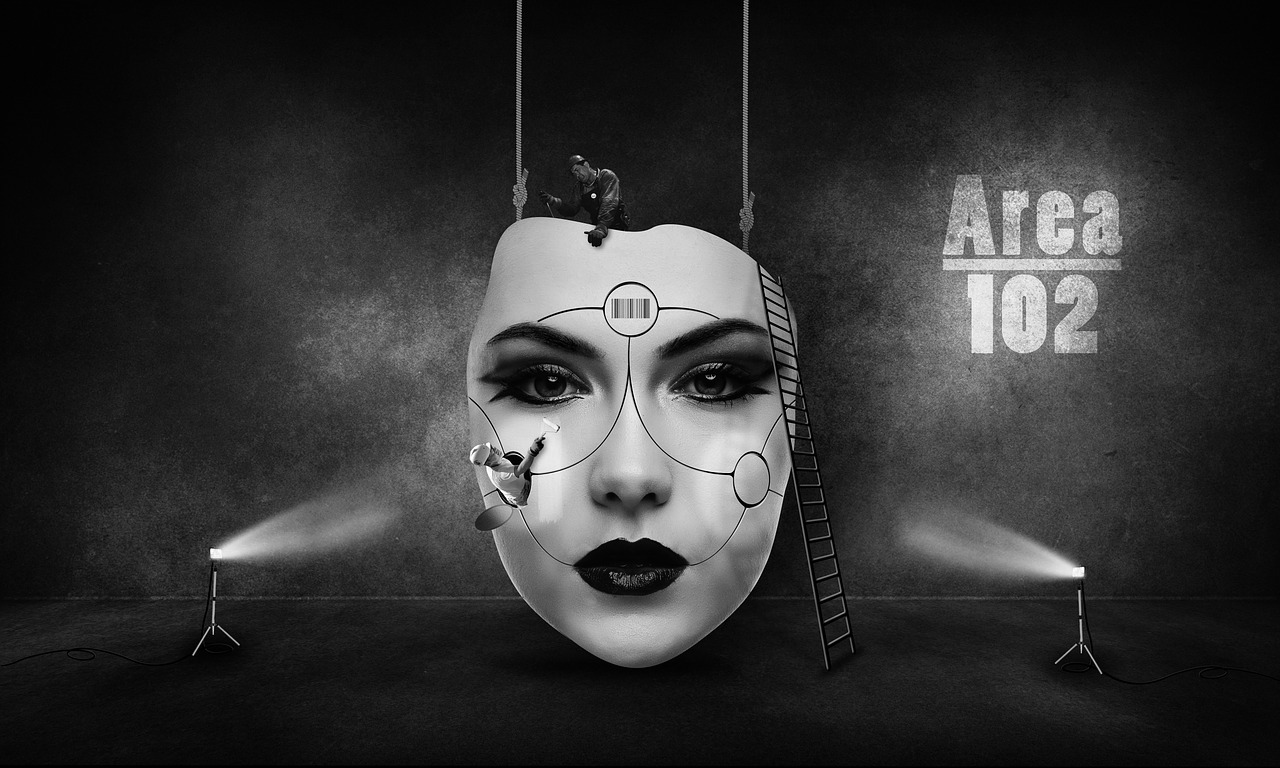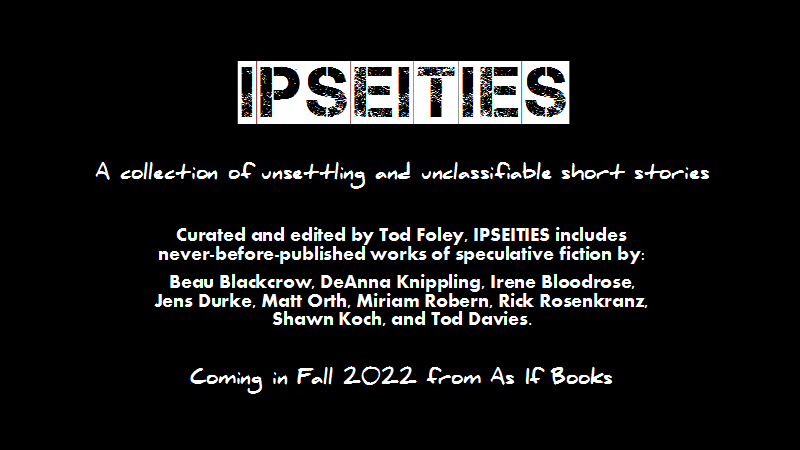
Sep 14, 2022 | Editing, Words in a Row
Our brains are a LOT more interested in filtering out unimportant input than on focusing our attention.
We work this way because the amount of data in the actual sensory world is incomprehensibly vast — even the 360 degrees around you right this second — and processing all of that data from all 5 senses (not to mention the internal dialog often triggered by such processing) would be utterly overwhelming.
And so, before we’ve even noticed a thing consciously, our brains have already singled it out as being potentially important and directed our attention at it, filtering out 99% of the rest of the world.
Use All Five Senses, Luke
It’s common for writers to think they must paint a detailed multi-sensory portrait of every room, every location, and every character they introduce. This mimics (mimesis) the ontology of the actual sensory world, as the reasoning goes, and our English teachers always said “use all five senses.” We wouldn’t want to disappoint Ms Engle.
But Ms Engle wasn’t teaching us how to write literature. Her job was just to make sure we were capable of expressing ourselves on paper, and the exercises she gave us were designed by a means testing committee in some industrial-scale educational corporation. It’s true that the practice of over-description is just like the actual sensory world — in which the entire blooming cacophony of existence is firehosed into all your headholes at once — but who the hell wants that?
No, On Second Thought, Please Don’t
In a work of fiction, the author (through the narrator or POV character) needs to play both roles — the perceiving and the filtering — because there’s no way the reader could be expected to make that judgment themself. Sure, there are exceptions (murder mysteries come to mind), but in most genres, unless you’re James Joyce, your readers don’t really want the entire blooming cacophony of existence. You must act as both the Perceiver AND the Filterer. Moreover, you must do this for both the POV character AND the reader simultaneously. That’s because, in some strange and magical way, your words exist in the gap between the voice and the head: your voice, their head.
What’s important is to notice what’s important.
This is perhaps most easily done in limited third person, because you just have to pay attention to the things your character would. In other stances, you’ll need to take a more deliberate hand in “painting” what you feel the reader needs to know, in order to elicit the experience or mood you’re conveying.
Sorry, Ms Engle, but you know it’s true.
# # #
Afterword: That Is Not Dead Which Can Eternal Edit
One final note: Overwriting may be fine, if that’s just the way you do first drafts. If you have a tendency toward over-description, you can always come back later and do a kind of “perspective edit,” or hire a professional editor to help you rein it all in. Yes, I am probably available.
Whatever it takes.

Aug 16, 2022 | Editing, Words in a Row
Did you write a scene where your Main Character looks in a mirror and notices details of their own appearance, so you could describe them?
STOP IT.
The biggest reason that mirror scene is so clearly evidence of a beginning writer is because over-description is also a sign of a beginning writer, and the mirror scene is just an excuse to do it.
It’s quite common for us to be taught in school that we should “use all five senses” and “describe things in detail.” Unfortunately, the teachers that tell us these things aren’t trying to make us better writers; their job is just to make sure we know the grammatical rules and don’t shirk from expressing ourselves on paper. What they taught us is not literary; it’s merely academically correct.
Meet a new person. Talk to them for a minute or two. Now walk away or close your eyes. Ask yourself: How many details do I remember?
Better still: How many of them are actually useful in understanding who this person is?
Certain details — like a look, a tone, a uniform, cleanliness/slovenliness, a pleasant or disgusting odor, wearing a power tie, expensive shoes on a poor character, a tattoo with symbolic meaning, words like “prissy” or “statuesque” or “disheveled” etc etc etc — these are actually important, because they suggest lots of information about this character. But most visual details are not important, and a TYPE DESCRIPTION (even something as simple as “he was a surly cop with arms as thick as your head”) are actually much more evocative.
Readers have their own imaginations, and visual details are usually more effective when used as associative triggers, rather than simply a list of empirical facts.
Things like hair color, eye color, color or brand names of clothing, pattern of fabric… this stuff is almost never important, and it simply produces cognitive overhead the reader must process without reward.
Just stop it.

Aug 11, 2022 | Editing
Want some free editing tips about indents? Here we go!
- Choose two linebreaks between paragraphs OR indented paragraphs. You don’t need both.
- Use the “Styles” feature instead of tabs to indent. Those tabs are a huge pain for your editor/layup artist to remove.
- The first paragraph in a chapter, or after a blockquote, or after a divider/dingbat, is never indented — even if you’re using indents.
Need help editing your work? I do that. Click here to check out my editing packages, or here to drop me an email.

Jul 25, 2022 | Editing, Words in a Row
AS A WRITER AND EDITOR, I’m a strong advocate of “Cutting to the Beat” — which means for each chapter, you want to start as close as possible to the beat you’re about to establish, establish it, and get out.
But I also love great literary stylization and emotional affect, and this is often more about tone than plot. David Foster Wallace was a master at this: he would write long passages in which there was there’s no “action” per se, but you felt the MC’s feelings and thoughts through Wallace’s vivid and evocative depiction of the world they see. It’s more about voice and tone at that point.
These approaches work differently in different types of stories, as well. You need to decide whether your story is one that mostly “wants” to stick to the beats to maintain forward momentum, or takes time to rely on voice and tone for immersion, or a mixture of the two.
The manner and degree to which you mix those two things will become a big part of the unique register of your “voice” in this book.

May 27, 2022 | Editing, Words in a Row
Next joint from As If Books: I am curating a collection of literary ipseities that will leave you feeling weird and wanting more. Not gonna disclose any more right now, except to say that I love my authors, and if you like weird lit, I think you’ll love em too.
Nov 28, 2021 | Editing, Products, Words in a Row
The latest release from As If Books! “Handjobs for Satan and Other Weird Tales” is the first book in Shawn Koch’s “Fragments” series of bizarro anthologies, and we’re proud to bring it to you!
Here’s the back cover blurb…
THE UNIVERSE IS SHATTERING, mind by mind.
Existence is assailed by the horrors of Beyond.
Madness is the new Normal.
These are the first thirteen Fragments: Stories broken from the pillars of creation.
• Fans follow a dead rock star into a world of pure heavy metal
• A derelict space mall is attacked by a cult of cosmic clowns
• An artificially intelligent train plays host to an alien god
• A reality-altering advertisement offers celebrities for murder
SL Koch brings you another journey through the bizarre, the absurd, and the uncomfortable. Thirteen short stories of doom metal, dark comedy,
pop culture, cosmic body horror, occult metaphysics, love, desire, and the secret places you find when you peel back the corners of existence.
Now available in paperback and Kindle editions at Amazon!




